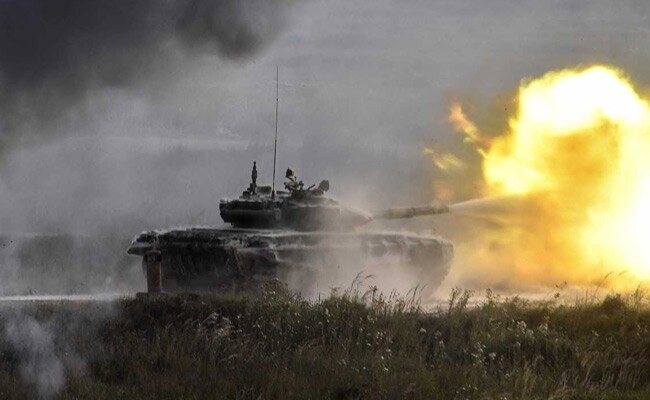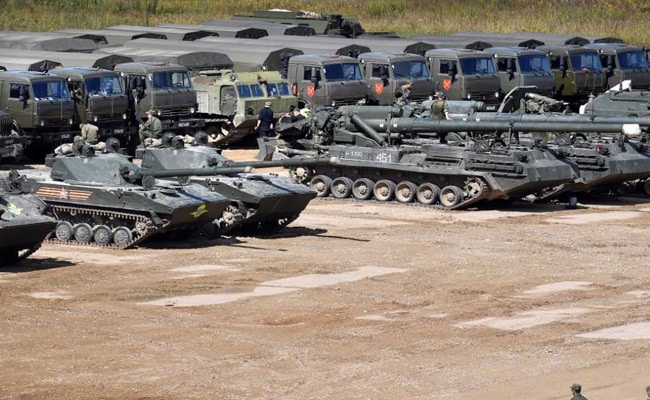
Russia's military exercise with Belarus will be closely watched by the United States (AFP)
Quick Take
Summary is AI generated, newsroom reviewed.
Exercise involves 12,700 troops and 680 pieces of military hardware
Western officials say around 70,000 to 100,000 troops are participating
The military exercise is being closely watched by the US

The Russian military exercises involve around 680 pieces of military hardware, including 138 tanks (AFP)
What's happening during the exercises?
Official Russian figures claim the exercises will involve 12,700 troops and 680 pieces of military hardware, including 138 tanks. But Western officials suggest that the numbers are probably far higher, with estimates ranging from 70,000 to as many as 100,000 participants. Putin and his Belarusian counterpart, Alexander Lukashenko, will appear on the sidelines over the weekend, a sign of how important the drills are to the Russian leader.
The Russian defense ministry bills Zapad 2017 as a defensive exercise, conjuring up a scenario where the combined armies of Russia and Belarus face off against an incursion from the imagined state of Veishnoriya, located for their purposes in northwestern Belarus. Veishnoriya - "a distillation of the Kremlin's darkest fears about the West," as the New York Times put it - is supported in its menacing activities by two other fictive nations, Lubeniya and Vesbasriya. Observers in the region aren't being too speculative when they suggest that these three invented states are stand-ins for the Baltic nations on Russia's borders.

Russia says the military exercise has a "strictly defensive character" (AFP)
The drill has a "strictly defensive character, its execution will not present any threat for the European community as a whole, nor for the neighboring countries," the Russian defense ministry said.
Why are Russia's neighbors concerned?
While military exercises are routine affairs - indeed, NATO is conducting its own in the Baltic states - Russian maneuvers yield no shortage of concerns for countries in the region. One fear is that Zapad 2017 will serves as a "Trojan horse," giving Moscow cover to leave behind some of the troops and military equipment it deployed for the exercise.
"We can't be totally calm," Lithuania's defense minister told reporters. "There is a large foreign army massed next to Lithuanian territory."
Some in the West have urged the Russians to be more transparent in their actions to build up trust. "With more military activities along our borders in the air, at land and at sea, the risk for incidents, accidents, miscalculations is increasing," NATO Secretary General Jens Stoltenberg told The Washington Post. "Transparency is the best way to avoid those kinds of incidents, accidents."
But just in case, four NATO battle groups - including U.S. troops - are on alert in the Baltic states and Poland, while U.S. jets will patrol Baltic airspace. Poland has also shut down its airspace near Kaliningrad, the Russian exclave on its northern border.
In Latvia, Foreign Minister Edgars Rinkevics told The Post that the country's leaders are "not panicking" but are being "cautious" because "what we are seeing is that the exercises are of an offensive nature, they are exercising access and area denial, they are exercising against at least four NATO member states under the pretext that they are fighting [separatists.]"
My colleagues unpacked the possible implications of these maneuvers further: "One is to rehearse the capability to seal off Lithuania, Latvia and Estonia, and deny access to the Baltic Sea to NATO forces attempting to come to their rescue. The other is to present a strategic challenge to U.S. and NATO leaders by demonstrating the high cost of defending the Baltics, thus sowing uncertainty about the viability of the alliance."
And even in Belarus, the beleaguered opposition held a protest last week over the presence of such a large Russian military footprint on Belarusian soil.
What do the exercises mean for Russia?
The last iteration of Zapad exercises in 2013 came at a far more tense time inside Russia. Putin's rule was shaken by mass protests in Moscow, while political uncertainty and crisis roiled next-door Ukraine. Not long after the drills, Russian troops annexed Crimea after the Russian-friendly government in Kyiv was ousted; Moscow later committed itself to supporting a long-running insurgency in eastern Ukraine.
This year, as it simulates fighting the sort of separatists it props up in Ukraine, Russia is operating from a far more confident position. Its largely successful campaign in Syria served as a showcase for its enhanced military capabilities. The buildup to the exercises has been widely broadcast in patriotic displays on Russian television.
Putin has presided over the "restoration of Russian pride in their armed forces," said Michael Kofman, a senior research scientist at CNA Corp., who suggests such military exercises are "a very important tool of legitimacy" for Putin. The exercise, said Kofman, who was speaking at an event hosted in Washington this week by the Center for the National Interest, is yet another example of the Russians "trying to demonstrate themselves as a power in the international system."
It's a system, though, that sees distrust abound both in Moscow and Western capitals. "While Zapad-2017 isn't likely to produce a new military hot spot," wrote Simon Saradzhyan of Harvard's Belfer Center for Science and International Affairs, "the possibility of conflict continues as long as the underlying animosities are not addressed."
(This story has not been edited by NDTV staff and is auto-generated from a syndicated feed.)
Track Latest News Live on NDTV.com and get news updates from India and around the world

